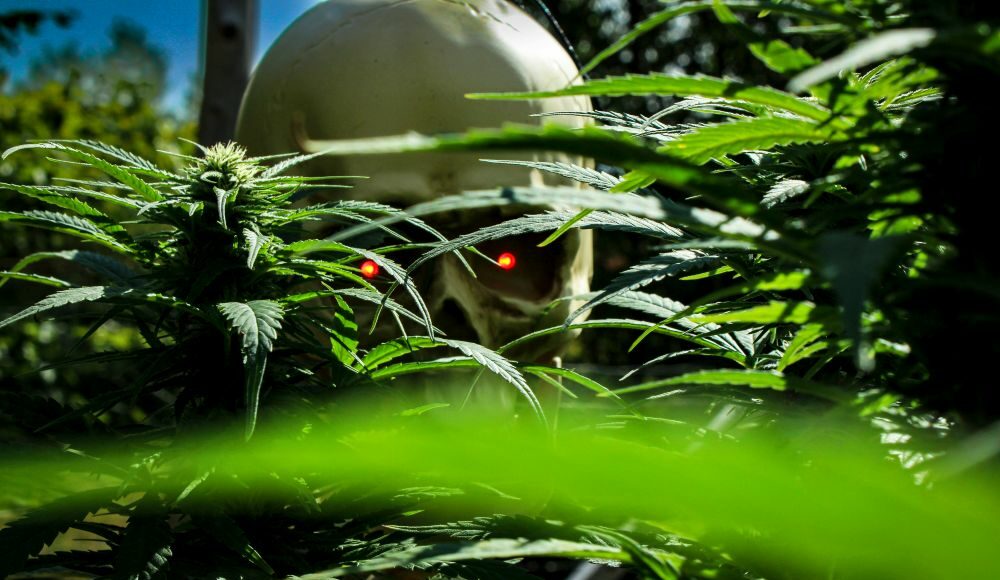Happy Halloween, your yearly reminder that no matter how normal cannabis becomes as legalization and popular acceptance grows across the land, there will always be cops and politicians out there spreading moral panic about the plant, and lots of reporters who are eager to help them do so.
This year, as every year, we’ve been subjected to a spate of scare stories about how some people like to toss cannabis edibles into the bags of trick-or-treaters. Never mind that 10 seconds of thought should be enough to convince anyone that this makes no sense. That’s because after 10 seconds, tops, the obvious question will arise: why would anybody do that? Cannabis is expensive. What would be the point of shelling out for the stuff only to slip it to a seven-year-old in a Barbie costume? To get a neighbor’s child high? To what end?
Scare stories like this long predate the moral panic surrounding cannabis. In the days of yore, the myths included the one about hiding razor blades in the center of apples (as if giving out apples on Halloween weren’t evil enough) and the one about people injecting heroin into Snickers bars.
There are, of course, people out there capable of doing such things, and much worse, and there have been sporadic reports over the decades of purposely tainted treats being passed out. But it’s such a tiny number over such a long period that it’s accurate enough to say: “That never happens.” One big reason it never happens is that it would be so easy to catch the psychos doing it.
The same is true of cannabis, but in this case it makes even less sense because, at least with the myths involving murderous lunatics, there’s a kind of motivation behind the act: murderous lunacy. But what would even a lunatic get out of some kid feeling kinda weird two blocks away and 60 minutes or more after having been slipped a cannabis treat?
No matter. This year, as in other years, law enforcement agencies are issuing dire-sounding warnings. Earlier this month, the St. Mary’s, Kan., police issued a “community advisory” about what it called “THC-infused gummies and snacks marketed to children ahead of the holidays.”
There is of course no indication that the gummies are “marketed to children,” much less that there’s any reason to believe anyone would toss them into kids’ treat bags. It’s all basically made up. That didn’t stop KSNT, the Topeka NBC affiliate, from passing along the “advisory” to viewers and readers with zero skepticism applied.
But it happens in big, sophisticated cities, too. Last year, WLS-TV, the ABC affiliate in Chicago, warned about “the risks of dangerous drugs being mistaken for candy.” CIting “doctors,” the station reported that “those incidents increase around Halloween, especially now with some drugs looking more and more like colorful treats.”
The online article for the report also mentioned “rainbow fentanyl” after the Drug Enforcement Administration issued an idiotic warning of “Mexican cartels” making colorful fentanyl pills in order to get kids hooked. NPR admirably exploded that myth.
The doctors in the WLS report didn’t really back up the warnings. They just said it’s a good idea to be careful with cannabis treats (not to mention dangerous narcotic drugs). Given that so many cannabis manufacturers insist on making their products look like they came from the candy aisle at CVS, that seems like good advice. And it’s true that accidental ingestion happens way too frequently, including with kids.
Last year, it happened in Winnipeg, when a woman passed out some cannabis treats to kids, apparently by accident. As is always the case with cannabis, nobody really got hurt. In this case, there weren’t even any reports of kids eating the gummies.
The good news is that it seems like the scare stories are growing slightly less frequent, and are perhaps getting slightly less silly. Warnings from police agencies more often just warn about such accidental distribution rather than trying to get people to be terrified of their neighbors, though of course that’s still happening.
More good news: nothing this year has reached the standard established in 2017, when a TV reporter in Charlotte, N.C. issued grave warnings about people sneaking CBD treats into kids’ bags. That’s right, CBD, which doesn’t cause a high. The reporter warned parents about how CBD can cause “a relaxing feeling.”



